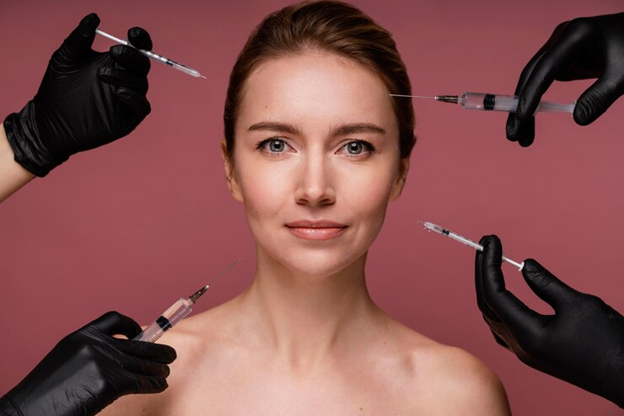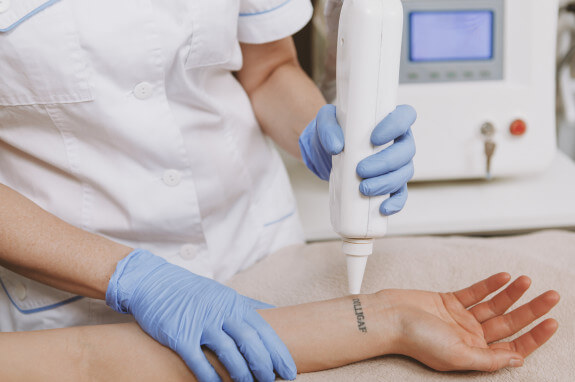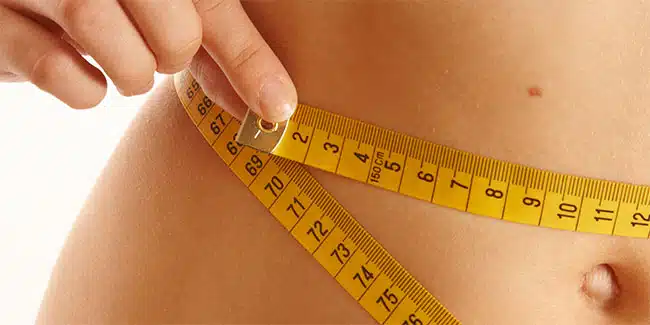
by Enfield Royal Saudi | Oct 8, 2025 | Health
When it comes to enhancing skin radiance and overall wellness, Glutathione injections in Riyadh {حقن الجلوتاثيون في الرياض}have become a sought-after treatment. But locating a trusted clinic near you can be overwhelming given the numerous options available. This guide provides expert tips on where to find safe, effective providers and the key factors to consider before booking your first appointment.
Why Choosing the Right Clinic Matters:
Choosing a reputable clinic isn’t just about convenience—it directly impacts the safety and effectiveness of your treatment. Glutathione injections require skilled administration to ensure proper dosage and to minimize side effects or complications.
How to Identify Trusted Providers:
Credentials and Licensing:
-
Ensure the clinic is licensed by Saudi health authorities and follows local regulations.
-
Confirm that injections are administered by qualified medical professionals, such as dermatologists or trained nurses.
-
Check for certifications or affiliations with recognized cosmetic or health organizations.
Clinic Reputation and Reviews:
-
Read online reviews on Google, social media, and local forums to gauge patient satisfaction.
-
Ask for before-and-after photos of previous clients to assess treatment quality.
-
Seek personal recommendations from friends or family who have undergone similar treatments.
Hygiene and Safety Standards:
-
Visit the clinic to check cleanliness and hygiene protocols.
-
Verify use of sterile equipment, single-use needles, and pharmaceutical-grade glutathione products.
-
Ensure emergency protocols are in place in case of adverse reactions.
Popular Areas to Find Glutathione Injection Clinics in Riyadh:
High-End Medical Districts:
-
Riyadh’s upscale neighborhoods such as Olaya and Al Malaz are home to many well-established aesthetic clinics.
-
These areas typically offer clinics with state-of-the-art facilities and experienced specialists.
Specialized Dermatology and Wellness Centers:
-
Clinics focusing on skin care and wellness are often the best bet for comprehensive glutathione treatment plans.
-
Look for centers that combine injections with personalized skin assessments and follow-up care.
Medical Spas and Cosmetic Clinics:
-
Some luxury spas in Riyadh also provide injection services supervised by licensed medical personnel.
-
These combine aesthetic treatments with a relaxing environment but verify medical oversight is stringent.
What to Ask During Your Initial Consultation:
Before committing to a clinic or treatment plan, getting clear answers to these questions is essential:
Key Questions to Ask:
-
What is the source and quality of the glutathione used?
-
How many sessions are recommended for optimal results?
-
Are there any potential side effects or contraindications in my case?
-
What is the total cost, including consultation, injections, and follow-ups?
-
What safety measures are in place during the procedure?
Red Flags to Avoid:
Warning Signs of Poor Providers:
-
Clinics offering suspiciously low prices that seem “too good to be true.”
-
Providers who do not conduct proper consultations or skin assessments.
-
Lack of transparency about ingredients or treatment protocols.
-
Clinics without visible licenses or medical supervision.
-
Unsanitary conditions or outdated equipment.
Tips for a Safe and Successful Glutathione Injection Experience:
-
Always choose clinics with proven track records and medical oversight.
-
Follow pre- and post-treatment care instructions meticulously.
-
Avoid excessive sessions or combining treatments without professional advice.
-
Maintain a healthy lifestyle to complement the injections’ benefits.
-
Report any unusual symptoms immediately to your healthcare provider.
Conclusion:
With growing demand, the options for glutathione injections are expanding rapidly in Riyadh. Prioritizing safety, quality, and professionalism when choosing your provider is the best way to ensure satisfying results. Take your time to research, ask questions, and select a clinic that aligns with your health and beauty goals for a confident, radiant glow.

by Enfield Royal Saudi | Oct 6, 2025 | Health
Rhinoplasty is one of the most popular cosmetic surgeries worldwide, yet it remains surrounded by misconceptions and myths. If you’re considering this procedure, understanding the facts versus fiction can help you make informed decisions. Exploring common myths about rhinoplasty {تجميل الأنف في الرياض}can clear up confusion and empower you to approach your nose surgery journey with confidence.
Let’s dive into some of the biggest misunderstandings and reveal the truth behind them.
Myth 1: Rhinoplasty Is Only for Cosmetic Reasons:
Many believe nose surgery is purely about appearance, but this is far from the full picture.
The Reality:
-
Functional benefits: Many patients seek rhinoplasty to correct breathing problems caused by a deviated septum or nasal obstructions
-
Reconstructive purposes: Trauma, birth defects, or previous surgeries often require corrective rhinoplasty
-
Combined goals: Surgeons can address both aesthetic and medical issues in a single procedure
This myth overlooks the health and quality-of-life improvements rhinoplasty can provide.
Myth 2: Results Look Artificial or “Operated On”:
The fear of an unnatural nose is a major concern for first-timers.
What Actually Happens:
-
Modern techniques emphasize natural harmony with your facial features
-
Surgeons focus on personalized results that enhance rather than change your identity
-
Skilled professionals avoid overly sculpted or “cookie-cutter” appearances
-
Recovery and swelling can temporarily affect appearance, but final results look balanced and subtle
Choosing the right surgeon is key to avoiding the dreaded “fake nose” look.
Myth 3: Rhinoplasty Has an Extremely Long Recovery:
Some think healing from nose surgery takes months or even years.
Typical Recovery Timeline:
-
Initial swelling and bruising: Usually improves significantly within 2 weeks
-
Return to work and social activities: Often possible after 1-2 weeks depending on the procedure
-
Final results: Can take up to a year to fully settle, but everyday appearance normalizes much sooner
-
Surgeons provide detailed aftercare plans to speed healing and reduce discomfort
Understanding the recovery process helps manage expectations realistically.
Myth 4: Only Celebrities Get Rhinoplasty:
Social media may give the impression that nose surgery is exclusive to the rich and famous.
The Truth:
-
Rhinoplasty is accessible to people from all walks of life
-
Many surgeons offer financing options and flexible payment plans
-
Advances in technology and competition have made procedures more affordable
-
Everyday people seek nose reshaping for personal confidence, not just fame or image
The procedure is far more common and widespread than the celebrity spotlight suggests.
Myth 5: All Rhinoplasties Are Painful:
Fear of pain can deter many from scheduling surgery.
What You Should Know:
-
Surgery is performed under anesthesia, so no pain during the procedure
-
Postoperative discomfort is usually manageable with prescribed medications
-
Modern surgical techniques minimize trauma and promote faster healing
-
Most patients describe pain as mild to moderate, not severe
A good surgical team ensures your comfort before, during, and after surgery.
Myth 6: You Can’t Breathe Properly After Rhinoplasty:
Concerns about breathing difficulties post-surgery are widespread but often unfounded.
How It Actually Works:
-
Functional rhinoplasty aims to improve airflow, often alleviating prior breathing issues
-
Surgeons are careful to maintain or enhance nasal passages during reshaping
-
Temporary congestion during healing is common but resolves fully
-
Long-term breathing problems caused by surgery are rare when done by an expert
Don’t let this myth prevent you from addressing both form and function.
Myth 7: Revision Surgery Is Always Necessary:
Some think initial results are almost never satisfactory and multiple surgeries are a given.
What’s True:
-
While revision rhinoplasty exists, most patients are happy with their first procedure
-
Choosing an experienced surgeon reduces the likelihood of needing corrections
-
Clear communication about goals and limitations minimizes surprises
-
When revisions are necessary, they are often minor and planned well in advance
Good surgical planning improves outcomes and reduces the need for multiple procedures.
How to Separate Fact from Fiction When Researching:
Misinformation spreads easily—here’s how to find reliable sources.
Tips for Accurate Information:
-
Consult board-certified surgeons with rhinoplasty expertise
-
Read peer-reviewed medical articles and reputable clinic websites
-
Avoid forums or social media accounts that promote unrealistic promises
-
Ask direct questions during your consultation to clarify doubts
Education is your best tool for making confident, safe choices.
Final Thoughts:
Debunking common myths about rhinoplasty helps you approach the procedure with a clearer, fact-based understanding. Whether your goals are cosmetic, functional, or both, knowing what to expect reduces anxiety and helps you partner with your surgeon for the best possible results.
Remember, each rhinoplasty journey is unique—arm yourself with facts, ask questions, and trust professionals who prioritize your health and satisfaction.

by Enfield Royal Saudi | Oct 3, 2025 | Health
If you’re considering laser tattoo removal {إزالة الوشم بالليزر في الرياض}, you’re likely to have plenty of questions before starting the process. This is especially true for those in Riyadh where demand for this service is growing rapidly. Understanding the basics and what to expect can help you make an informed decision and feel confident about your tattoo removal journey.
1. How Does Laser Tattoo Removal Work?
Laser tattoo removal uses focused light energy to break down tattoo ink particles in the skin. The body’s immune system then gradually clears away these fragmented particles over several weeks.
-
Different laser wavelengths target various ink colors.
-
Multiple treatment sessions are usually required for complete removal.
-
Modern lasers minimize damage to surrounding skin for safer treatments.
2. Is Laser Tattoo Removal Painful?
Pain tolerance varies among individuals, but many describe the sensation as similar to snapping a rubber band against the skin.
-
Topical anesthetics or cooling devices can reduce discomfort.
-
Newer laser technologies often provide faster and less painful treatments.
-
Mild soreness or redness may occur after sessions but typically subsides quickly.
3. How Many Sessions Will I Need?
The number of sessions depends on several factors including:
-
Tattoo size and color complexity.
-
Depth and age of the tattoo.
-
Skin type and individual healing response.
-
On average, removal takes between 5 to 10 sessions spaced 6 to 8 weeks apart.
4. Are There Any Risks or Side Effects?
While laser tattoo removal is generally safe when performed by qualified professionals, some risks include:
-
Temporary redness, swelling, or blistering.
-
Rare cases of scarring or changes in skin pigmentation.
-
Proper aftercare reduces the likelihood of complications.
5. How Do I Choose the Right Clinic in Riyadh?
Choosing a reputable clinic is critical for safe and effective tattoo removal.
-
Look for licensed specialists with experience in laser treatments.
-
Ensure the clinic uses modern laser equipment.
-
Read client reviews and request before-and-after photos.
-
Confirm that consultations are thorough and transparent about pricing.
Additional Tips for a Successful Removal Process:
-
Avoid sun exposure before and after treatments.
-
Follow all aftercare instructions provided by your specialist.
-
Stay patient as gradual fading over multiple sessions is typical.
-
Communicate openly with your provider about any concerns or reactions.
Why Laser Tattoo Removal in Riyadh Is Popular:
With rising awareness and access to advanced technology, many in Riyadh are choosing professional tattoo removal to enhance their appearance and meet personal or professional goals. The combination of skilled practitioners and state-of-the-art lasers ensures effective treatments with minimal downtime.
Final Thoughts: Ready to Remove Your Tattoo?
Understanding these key questions about laser tattoo removal will help you prepare for a smoother, more successful experience. Whether removing a small tattoo or larger, more colorful designs, consulting a trusted specialist in Riyadh will ensure the best care and results for your skin.

by Enfield Royal Saudi | Oct 1, 2025 | Health
Recovering from a tummy tuck surgery in Riyadh involves more than just rest—it requires careful planning to know when and how to safely resume physical activity. Many patients eagerly want to get back to their workout routines but are unsure about the right timing and precautions to take. Understanding the recovery timeline and recommended exercise guidelines ensures that you protect your results and avoid complications.
Understanding Your Body’s Healing Process:
Your body undergoes significant healing after abdominal surgery, making patience crucial before returning to the gym.
Key Healing Phases:
-
Initial Recovery (Weeks 1-2): Focus on rest and gentle movement to promote blood flow.
-
Intermediate Phase (Weeks 3-4): Light walking and simple daily activities resume.
-
Advanced Recovery (Weeks 5-6 and beyond): Gradual reintroduction of more intense workouts under medical advice.
When Can You Start Exercising Again?
The right time to restart workouts varies based on individual healing, but some general timelines help guide you.
Recommended Timeline for Activity:
-
Week 1 to 2: Avoid all strenuous activity and focus on walking slowly around your home.
-
Week 3 to 4: You may begin light stretching and short walks, but avoid abdominal exercises.
-
Week 5 to 6: Gentle cardio such as cycling or walking on a treadmill can be introduced cautiously.
-
After 6 Weeks: Depending on your doctor’s approval, you can gradually resume strength training and core workouts.
Exercises to Avoid Early On:
Certain movements can jeopardize your recovery or cause discomfort if performed too soon.
High-Risk Exercises Post-Surgery:
-
Heavy lifting or resistance training involving the core.
-
High-impact activities such as running, jumping, or aerobics.
-
Abdominal crunches, sit-ups, or twisting motions.
-
Exercises that strain the surgical site or increase intra-abdominal pressure.
Safe Post-Tummy Tuck Workout Ideas:
Gentle activities support circulation, reduce swelling, and help maintain fitness without risking injury.
Recommended Low-Impact Workouts:
-
Walking: The best initial exercise to stimulate healing and circulation.
-
Gentle stretching: Promotes flexibility without stressing the abdomen.
-
Light stationary cycling: Helps cardiovascular health with minimal strain.
-
Breathing exercises: Support relaxation and improve oxygen flow.
Tips for a Successful Return to Fitness:
Planning your comeback to the gym thoughtfully can protect your investment in surgery and your health.
Essential Recovery Workout Tips:
-
Always get clearance from your surgeon before resuming any exercise.
-
Listen to your body—stop immediately if you feel pain, discomfort, or excessive fatigue.
-
Wear compression garments during workouts to support your abdomen.
-
Increase intensity gradually; avoid jumping back to your previous workout level too quickly.
-
Stay hydrated and maintain a balanced diet to support healing.
Signs to Pause or Modify Your Workout:
Monitoring your body’s response to exercise after surgery is vital.
Warning Signals:
-
Sharp or persistent pain around the incision or abdomen.
-
Excessive swelling, bruising, or redness.
-
Feeling dizzy, lightheaded, or short of breath during or after activity.
-
Any unusual discharge or signs of infection near the surgical site.
Importance of Combining Exercise with Proper Post-Op Care:
Exercise is just one piece of the recovery puzzle; holistic care ensures optimal results.
Complementary Recovery Practices:
-
Follow post-surgical care instructions regarding wound management.
-
Prioritize adequate sleep and stress management.
-
Attend all follow-up appointments to monitor healing progress.
-
Avoid smoking and limit alcohol, as they can delay recovery.
Long-Term Fitness After Surgery:
Once fully healed, staying active contributes to maintaining your tummy tuck results and overall well-being.
Benefits of Post-Recovery Fitness:
-
Enhances muscle tone and body contour.
-
Supports healthy weight maintenance.
-
Boosts energy levels and mental health.
-
Reduces the risk of future abdominal sagging.
Final Thoughts
Patience and listening to your body are the most important factors when returning to exercise after tummy tuck surgery. By following medical advice and gradually increasing activity, you can enjoy the benefits of physical fitness while protecting your surgical results. Whether you live in Riyadh or beyond, this careful approach helps you reclaim your strength and confidence safely.

by Enfield Royal Saudi | Oct 1, 2025 | Health
If you’ve been struggling with the question, how do I get rid of ingrown hair on my legs? {كيف اتخلص من الشعر تحت الجلد في الساقين}, especially when those bumps become itchy and red, you’re not alone. Ingrown hairs can cause frustrating irritation and inflammation that interferes with your comfort and confidence. Fortunately, with the right skincare approach, you can soothe the itching, reduce redness, and prevent these pesky bumps from recurring.
Let’s dive into practical, dermatologist-recommended steps to regain smooth, calm skin on your legs.
Understanding Why Ingrown Hairs Cause Itchy, Red Bumps:
Ingrown hairs occur when hair grows sideways or curls back into the skin instead of outward. This trapped hair irritates the follicle, leading to an inflammatory response marked by redness, swelling, and often itching. The skin’s reaction can range from mild discomfort to painful, pus-filled bumps if infection occurs.
Common Causes Behind Itchy Ingrown Hairs:
-
Dead skin cells clogging hair follicles
-
Shaving too closely or using dull razors
-
Dry or sensitive skin lacking proper moisture
-
Wearing tight or synthetic clothing that traps sweat and heat
-
Frequent hair removal without adequate aftercare
Recognizing these causes helps you tackle the root of the problem, not just the symptoms.
Immediate Relief for Itchy, Red Ingrown Hair Bumps:
When irritation strikes, the goal is to calm your skin quickly and safely.
Quick Soothing Measures:
-
Apply a cool compress: Wrap ice in a cloth and gently press on affected areas for 5–10 minutes
-
Use aloe vera gel: Natural anti-inflammatory properties help reduce redness and soothe itch
-
Avoid scratching or picking: This can worsen irritation and increase infection risk
-
Apply over-the-counter hydrocortisone cream (1%): Helps control inflammation and itching but use sparingly
These first-aid steps provide comfort and prevent further damage to your skin.
Daily Skincare Routine to Prevent Recurring Ingrown Hairs:
A consistent skincare regimen is your best weapon to avoid future itchy, red bumps.
Cleanse Properly:
-
Use a mild, fragrance-free body wash daily to remove dirt and oil
-
Avoid harsh soaps or hot water that can dry out the skin
-
Gently pat dry instead of rubbing to reduce irritation
Exfoliate Regularly:
-
Exfoliate 2–3 times weekly to clear dead skin cells blocking follicles
-
Choose chemical exfoliants like salicylic acid or glycolic acid for gentle yet effective results
-
Avoid abrasive scrubs on sensitive or inflamed areas
Hydrate Consistently:
-
Apply a lightweight, fragrance-free moisturizer after cleansing and exfoliating
-
Look for ingredients like ceramides, glycerin, or hyaluronic acid to repair the skin barrier
Keeping your skin clean, smooth, and hydrated makes it less likely for hairs to become trapped and irritated.
Adjusting Hair Removal Practices for Sensitive Skin:
Many cases of ingrown hairs are linked to shaving or waxing methods that stress the skin.
Hair Removal Tips to Minimize Ingrown Hairs:
-
Always shave after a warm shower to soften hair and open pores
-
Use a sharp, clean razor and replace blades regularly
-
Shave gently in the direction of hair growth without applying too much pressure
-
Use a moisturizing shave gel or cream rather than soap
-
Consider alternatives like laser hair removal or depilatory creams if prone to irritation
Gentler hair removal promotes healthy regrowth and reduces follicle inflammation.
When to Use Targeted Treatments:
For stubborn or inflamed ingrown hairs, specialized treatments can help speed healing and reduce symptoms.
Effective Treatment Options:
-
Topical salicylic acid: Breaks down dead skin and prevents follicle blockages
-
Tea tree oil: Antibacterial and anti-inflammatory when diluted properly
-
Witch hazel: Natural astringent that tightens pores and reduces redness
-
Prescription creams: For severe cases, dermatologists may recommend antibiotics or retinoids
Always patch test new products and consult a healthcare provider if irritation worsens.
Lifestyle Habits That Support Healthy Skin:
Beyond skincare and hair removal, everyday habits can influence how your skin reacts.
Helpful Lifestyle Adjustments:
-
Wear loose, breathable clothing to reduce friction and heat buildup
-
Avoid excessive sweating or shower promptly after workouts
-
Drink plenty of water to maintain skin hydration
-
Avoid hot tubs or pools with harsh chemicals when skin is irritated
-
Change towels and sheets regularly to prevent bacterial buildup
Healthy skin from the inside out is better equipped to fight irritation and heal quickly.
Recognizing When to Seek Medical Advice:
If itchy, red bumps persist or worsen despite your best efforts, it’s important to consult a dermatologist.
Signs to See a Doctor:
-
Pus-filled or increasingly painful bumps
-
Spreading redness or warmth indicating infection
-
Scarring or dark spots from repeated ingrown hairs
-
Frequent recurrence despite prevention measures
Professional evaluation ensures you receive appropriate treatment and avoid complications.
Final Thoughts:
If you’re asking, how do I get rid of ingrown hair on my legs?, especially when they become itchy and red, the answer lies in gentle care, smart hair removal, and consistent skin maintenance. By following these steps, you can soothe existing irritation and protect your skin from future flare-ups.
With patience and the right routine, smooth, comfortable legs without itchy bumps are absolutely achievable.





